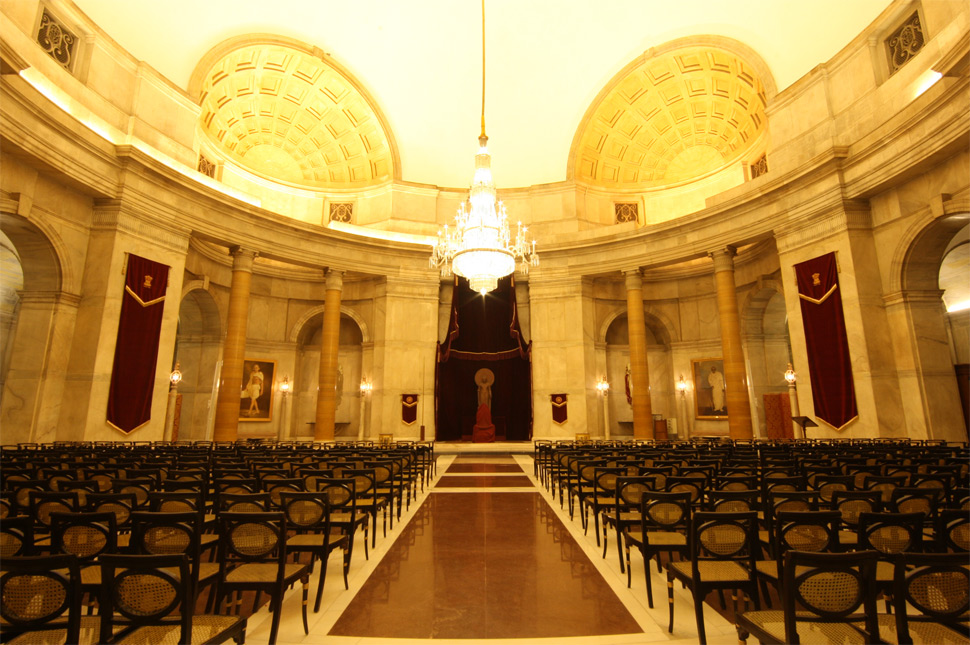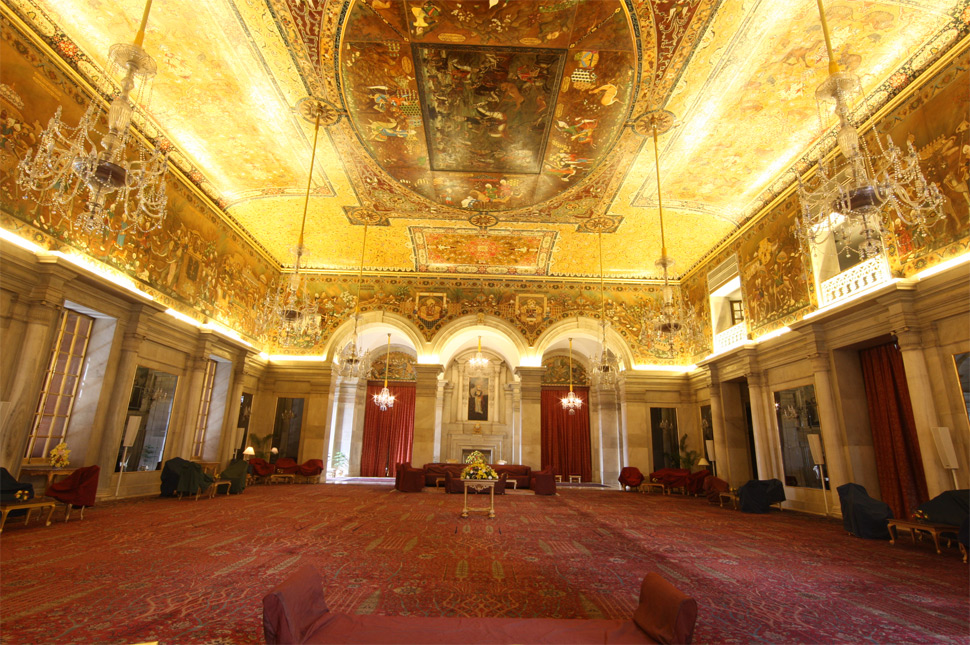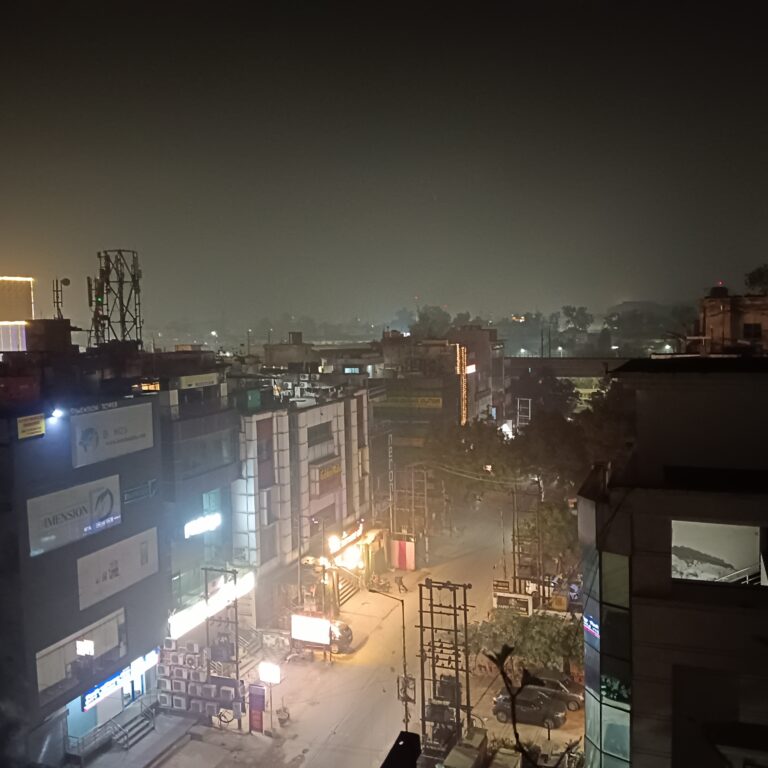
Durbar Hall. All photos courtesy Rashtrapati Bhavan website.
New Delhi: The historic Durbar Hall and Ashok Hall of Rashtrapati Bhawan have been renamed as ‘Ganatantra Mandap’ and ‘Ashok Mandap’ respectively, the President’s Secretariat, stated here today. It explained the move to rename these two iconic halls was part of a consistent endeavour to make the ambience of the Rashtrapati Bhavan reflective of the Indian cultural values and ethos.
“Accordingly, President Droupadi Murmu is pleased to rename two of the important halls of Rashtrapati Bhavan – namely, ‘Durbar Hall’ and ‘Ashok Hall’ – as ‘Ganatantra Mandap’ and ‘Ashok Mandap’ respectively,” it said.
Rashtrapati Bhavan, the office and the residence of the President of India, is a symbol of the nation, and an invaluable heritage of the people. Continuous efforts are being made to make it more accessible to people.
Durbar Hall is the venue of important ceremonies and celebrations such as the presentation of National Awards. Erstwhile known as the Throne Room, it is also where C. Rajagopalachari took oath as the Governor-General of India in the year 1948.
Currently, the Durbar Hall is used to host Civil and Defence Investiture Ceremonies wherein the President of India confers prestigious honours to the recipients. Swearing-in ceremonies of incoming governments, additions to the Council of Ministers and the swearing-in of the Chief Justices of India are all conducted at the Durbar Hall. The Durbar Hall was also used for paying respects to India’s fifth President Fakhruddin Ali Ahmed on the occasion of his demise in the year 1977.
This ceremonial hall is right under the central Dome of Rashtrapati Bhavan. It can be accessed from three sides, through the front forecourt steps via the six-metre teak door and through the twin ash grey marble stairways on Durbar Hall’s either side.
The term ‘Durbar’ refers to courts and assemblies of Indian rulers and the British. “It lost relevance after India became a Republic, that is, ‘Ganatantra’. The concept of ‘Ganatantra’ is deeply rooted in Indian society since ancient times, making ‘Ganatantra Mandap’ an apt name for the venue,” a press release stated.

The Ashok Hall was originally a ballroom. The word ‘Ashok’ connotes someone who is “free from all sufferings” or is “bereft of any sorrow”. Also, ‘Ashoka’ refers to Emperor Ashok, a symbol of unity and peaceful co-existence. The National Emblem of the Republic of India is the lion capital of Ashok from Sarnath. The word also refers to the Ashok tree which has deep significance in Indian religious traditions as well as arts and culture.
The Ashok Hall is used for the presentation of credentials by Heads of Missions of foreign countries and as a formal place of introductions for the visiting and Indian delegations before the commencement of the State Banquets hosted by the President.
“Renaming Ashok Hall as Ashok Mandap brings uniformity in language and removes the traces of anglicisation while upholding the key values associated with the word ‘Ashok’,” it added.
– global bihari bureau





